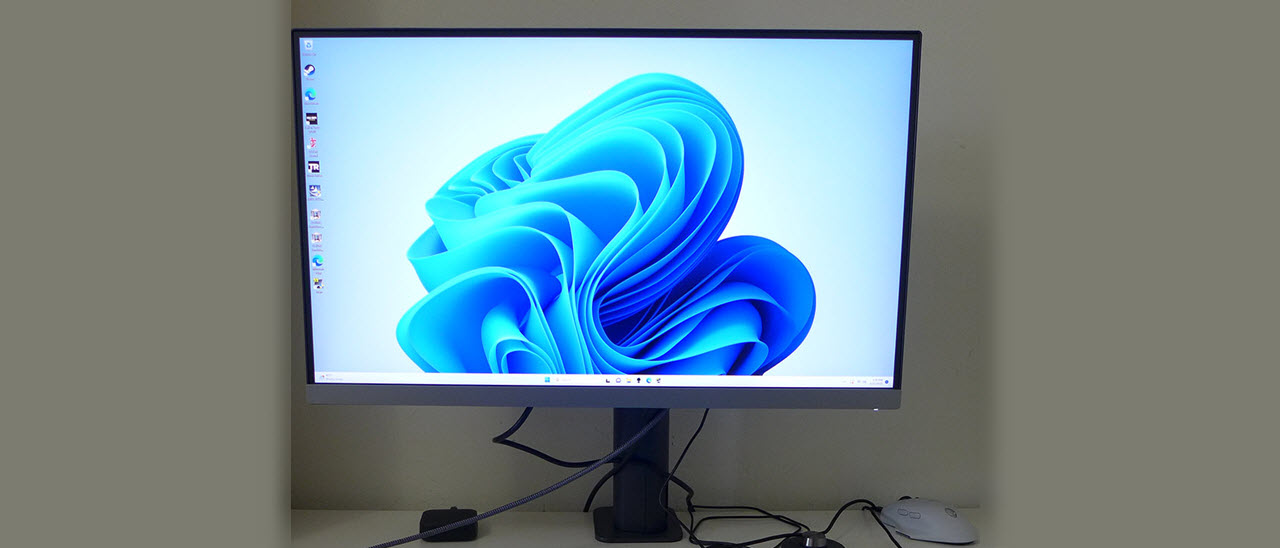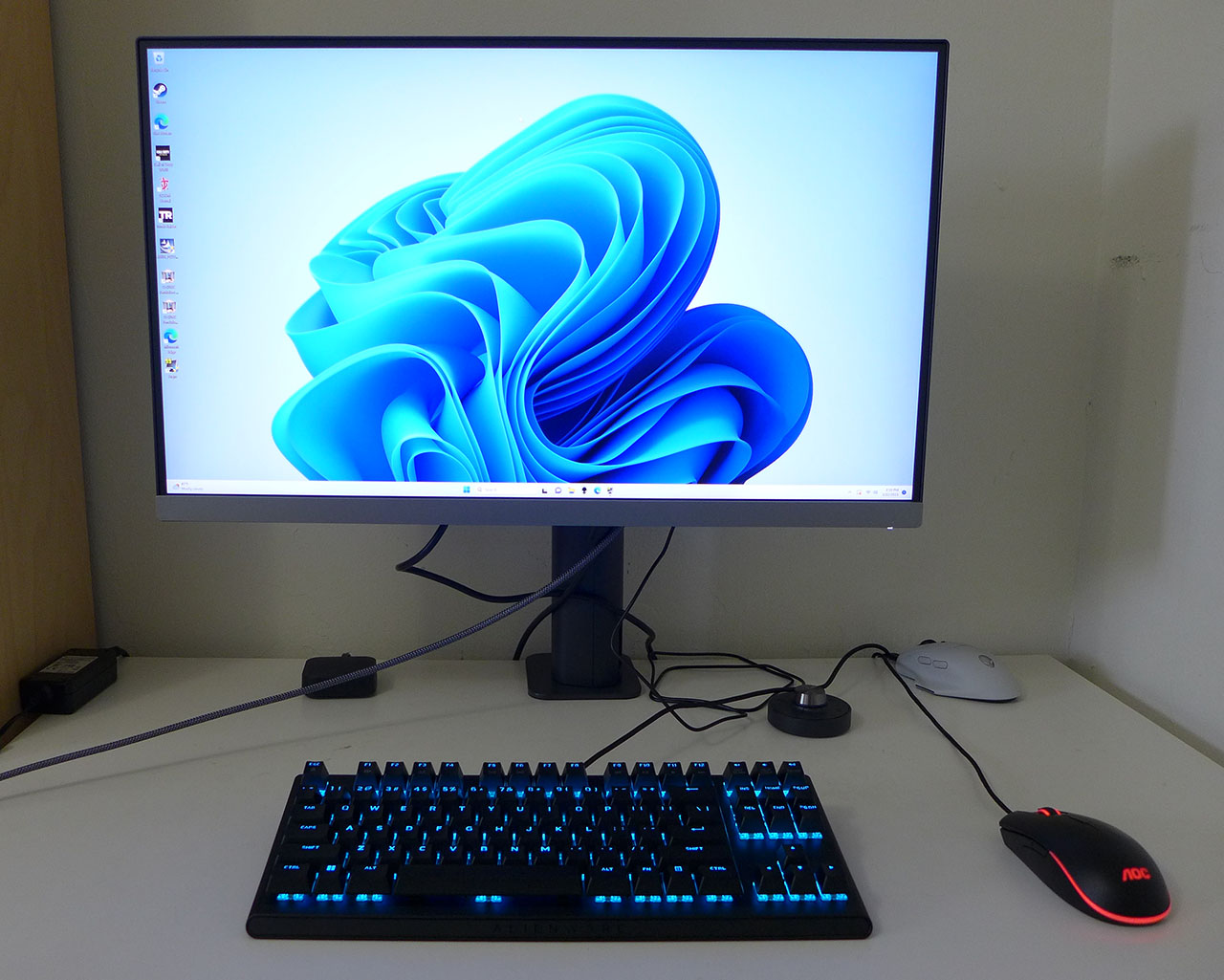Why you can trust Tom's Hardware
The professional monitor category is really two genres. There are panels with every bell and whistle that have supremely accurate color and tons of options that sell for high prices. And some displays deliver the same accuracy with fewer peripheral features that cost less. If you have the budget, spending over $2,000 on a 27-inch 4K monitor with Mini LED or OLED technology and high precision is easy. Or you can budget $650 and get BenQ’s DesignVue PD2706UA.
The PD2706UA has color accuracy equal to the best pro screens I’ve tested. It doesn’t need calibration for its gamut modes, DCI-P3, sRGB or Rec.709. If you want to take it to a higher standard, though, precise RGB controls with gamma and gamut presets deliver exactly what their labels indicate. Ultimately, pros need a monitor that can be easily adjusted to different color standards without much fuss. And if you’ve never experienced the convenient ability to change panel brightness with a dial, BenQ’s Hotkey Puck makes that a cool reality.
Gaming isn’t the PD2706UA’s forte, but though it showed me some motion blur in test patterns, the play experience was OK. By locking the frame rate at 60 Hz, frame tears were rare and motion resolution was good enough for my casual skills. Esports competitors will want to shop for a speedier panel, but if you want to blow off a little steam during lunch by liquidating monsters in Doom Eternal, the PD2706UA serves that purpose.
Most of all, it delivers a superb image. With SDR contrast around 1,200:1 and HDR topping 5,300:1, plenty of dynamic range ensures true blacks, bright highlights, and a deeply saturated image. Even without fancy tech, the PD2706UA has a wider color gamut than many high-end monitors.
Taken as a value display, the BenQ DesignVue PD2706UA has few, if any, equals. With premium build quality, a rock-solid monitor arm in the box, and near-perfect color, it should make quite a few users’ shortlists. Unless you need Adaptive-Sync and fast refresh, it’s definitely worth checking out.
MORE: Best Gaming Monitors
MORE: How We Test PC Monitors
Get Tom's Hardware's best news and in-depth reviews, straight to your inbox.
MORE: How to Buy a PC Monitor: A 2022 Guide
MORE: How to Choose the Best HDR Monitor

Christian Eberle is a Contributing Editor for Tom's Hardware US. He's a veteran reviewer of A/V equipment, specializing in monitors. Christian began his obsession with tech when he built his first PC in 1991, a 286 running DOS 3.0 at a blazing 12MHz. In 2006, he undertook training from the Imaging Science Foundation in video calibration and testing and thus started a passion for precise imaging that persists to this day. He is also a professional musician with a degree from the New England Conservatory as a classical bassoonist which he used to good effect as a performer with the West Point Army Band from 1987 to 2013. He enjoys watching movies and listening to high-end audio in his custom-built home theater and can be seen riding trails near his home on a race-ready ICE VTX recumbent trike. Christian enjoys the endless summer in Florida where he lives with his wife and Chihuahua and plays with orchestras around the state.
-
helper800 Wow, this seems like a huge bargain at 650 dollars. The clamp / stand it come with alone is around a 100 dollar value.Reply -
mickrc3 The last 32in 4K monitors I bought near Christmas were LG models with adaptive sync and HDR and you could have easily bought 2 of them for the price of this smaller Benq 27in. Besides the word Professional there doesn't seem to be much remarkable about this monitor. Where's the value?Reply -
cmccane The only real options for serious studio creators right now are the Dell 32" 8K monitor or a 65" Samsung 8K monitor which are both several times the price of these 4K monitors. If you're running Final Cut Pro on a new Mac that supports 8K, its not an option to only be able to see 4K at one time. No doubt the clips or movies you generate will be in 4K but if you start with 8K raw video, which in itself is still a feat, you don't want a 4K monitor.Reply -
helper800 Reply
I do not believe that recording in 8k RAW is even needed, seems like a waste of time and money, but what do I know...cmccane said:The only real options for serious studio creators right now are the Dell 32" 8K monitor or a 65" Samsung 8K monitor which are both several times the price of these 4K monitors. If you're running Final Cut Pro on a new Mac that supports 8K, its not an option to only be able to see 4K at one time. No doubt the clips or movies you generate will be in 4K but if you start with 8K raw video, which in itself is still a feat, you don't want a 4K monitor.

